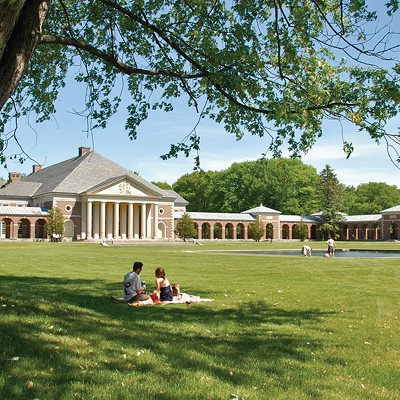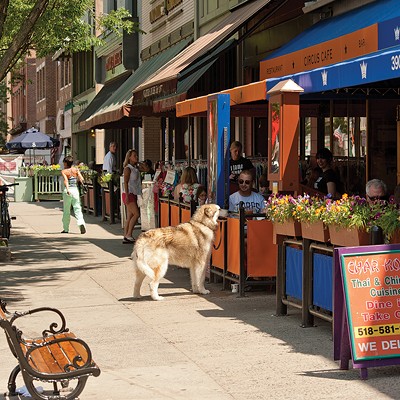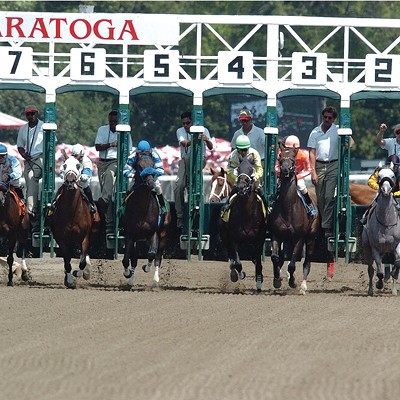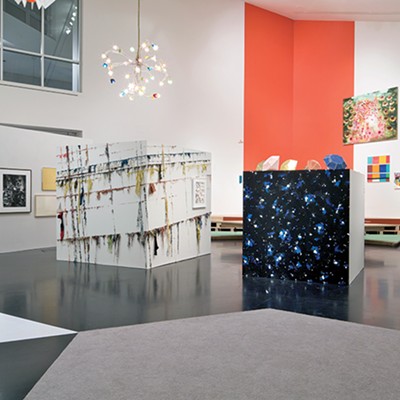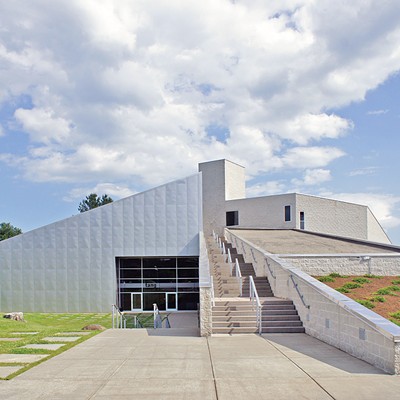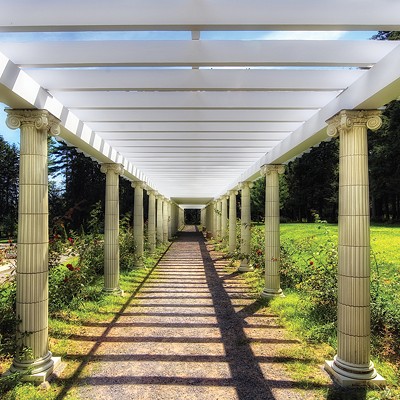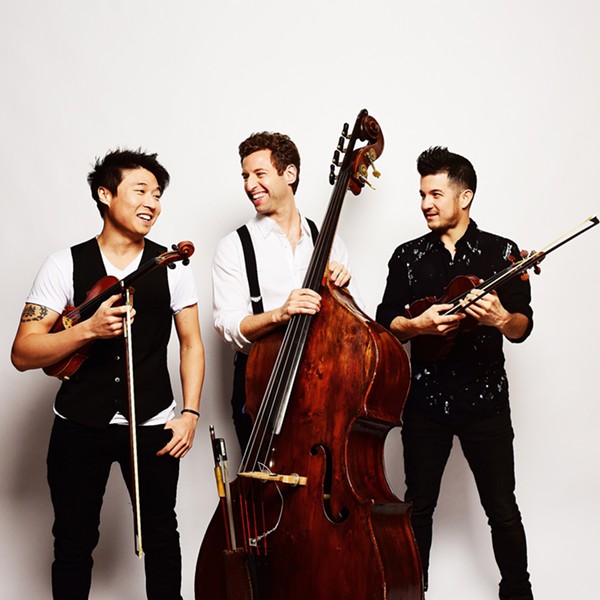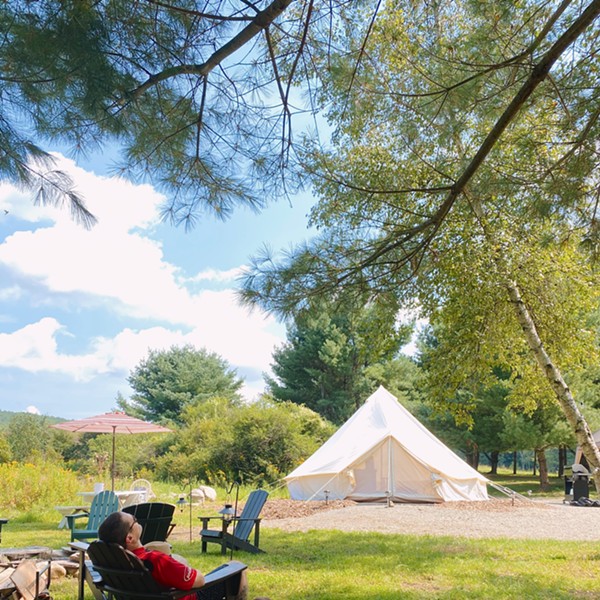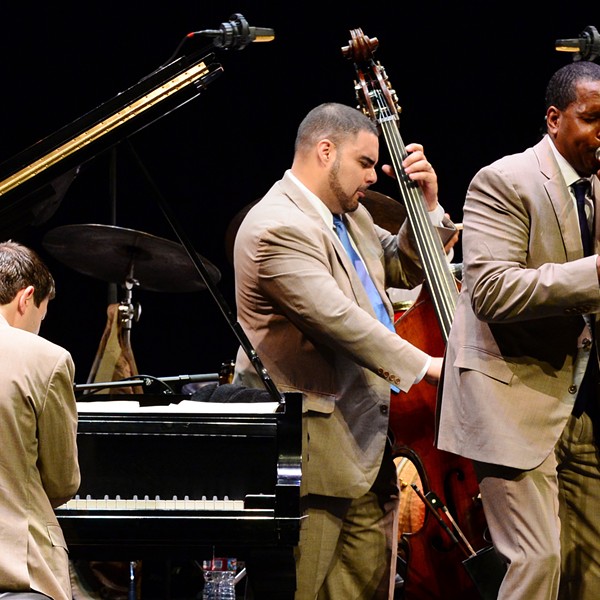Horse Culture
At heart, Saratoga Springs is a horse town—more so, even, than a gambling town. Attending the races, which start this year on July 19 and conclude on Labor Day weekend, is the best way to experience it, whether you arrive before the gates open in the morning to claim a picnic table on the shaded lawn area or straggle in later for a seat on the unshaded benches by the turf, where horses thunder by on their way to the finish line.
A behind-the-scenes view of the track is best obtained at breakfast time, when free tram tours (aside from the "dark day" of Tuesday when the track is closed) give an inside look at the backstretch area, where horses are cared for by the hundreds of grooms, riders, and hot-walkers who lug water buckets, rub down horses, and heft hay to keep the horses bathed, fed and exercised. Beginning this year, the New York Racing Association—the often-embattled nonprofit racing association that operates the New York tracks of Aqueduct, Belmont Park and Saratoga—will also offer paid guided tours between 9 a.m. and 4 p.m. focusing on track history.
The history of racing can be further explored at the National Museum of Racing and Hall of Fame, one of Saratoga's finest museums, located across the street from the racecourse on Union Avenue. It has a courtyard statue of the beloved racehorse Secretariat, galleries of memorabilia and a racing simulator that replicates the physical demands and unbelievable speed of a typical thoroughbred race.
Arts & Letters
The cultural life of Saratoga Springs comes alive in the summer as well. Of all the grand hotels that once lined Broadway in the Victorian era but later burned or were razed, only the Adelphi Hotel remains. Built in 1877, its foliage-filled garden patio provides one of the best spots to absorb Saratoga's storied past. The hotel changed owners last year, but the new owners—a local real estate development team—have pledged to keep the Adelphis's historic charm intact.
Yaddo, the famed artist's retreat, is located on the former estate of Spencer and Katrina Trask—philanthropists and arts supporters who voiced significant opposition to Saratoga's turn toward gambling in the late 1880s. Rarely does Yaddo offer the public a glimpse inside its mansion, where artists, musicians, and authors go for a quiet place to create, but the estate's enchanting gardens are open to the public seven days a week from dusk to dawn.
Other summer cultural highlights include the intimate brick-walled bar 9 Maple Avenue, known for its weekend night jazz performances and massive collection of single-malt scotches, and the cultural offerings of Skidmore College: Its inventive Tang Teaching Museum and Art Gallery, Arthur Zankel Music Center, and Summer Writer's Institute with a full slate of author readings in July.
Saratoga food culture has steadily improved over the past decade, with the popular Saratoga Farmers Market a focal point for chefs picking up local produce, meats, and cheeses to serve in their restaurants. Hattie's Chicken Shack, a soul food joint on Phila Street, is one local food institution in particular that celebrates Saratoga's connection to the past. A Saratoga institution in the late '30s and '40s when the city swung with speakeasies and smoky mob-connected clubs, it was started by Hattie Gray, an African-American woman who worked summers for a local family before saving her money to open her own place.
Hattie's celebrates its 75 anniversary this year. "This type of longevity for any business is rare but for a restaurant it is almost unheard of," says current chef and owner Jasper Alexander. "Grandparents that were first brought to Hattie's as children by their grandparents now bring their grandchildren to the restaurant."
Venturing North
Saratoga lies just below the Adirondack Mountain foothills, a close destination for visitors looking to explore the wilds of the largest state-level protected area in the contiguous United States. From Saratoga Springs, popular trips include Blue Mountain Lake's Adirondack Museum, with galleries and historic buildings filled with exhibits on logging, boating, and other facets of Adirondack life, while tours of Gilded Age retreats like the Great Camp Sagamore, now a National Historic Landmark, can be found in Raquette Lake.
The famous camps of Raquette Lake, developed by William West Durant, were owned by Gilded Age barons like Alfred Vanderbilt and J. P. Morgan. "Historically important, they embodied the way the Gilded Age roughed it in the woods while Newport, Rhode Island's cottages manifested the beach holidays of the era," says Barbara Glaser, a Saratoga Springs resident who helped spearhead the drive to save the historic site from decay in the 1970s.










